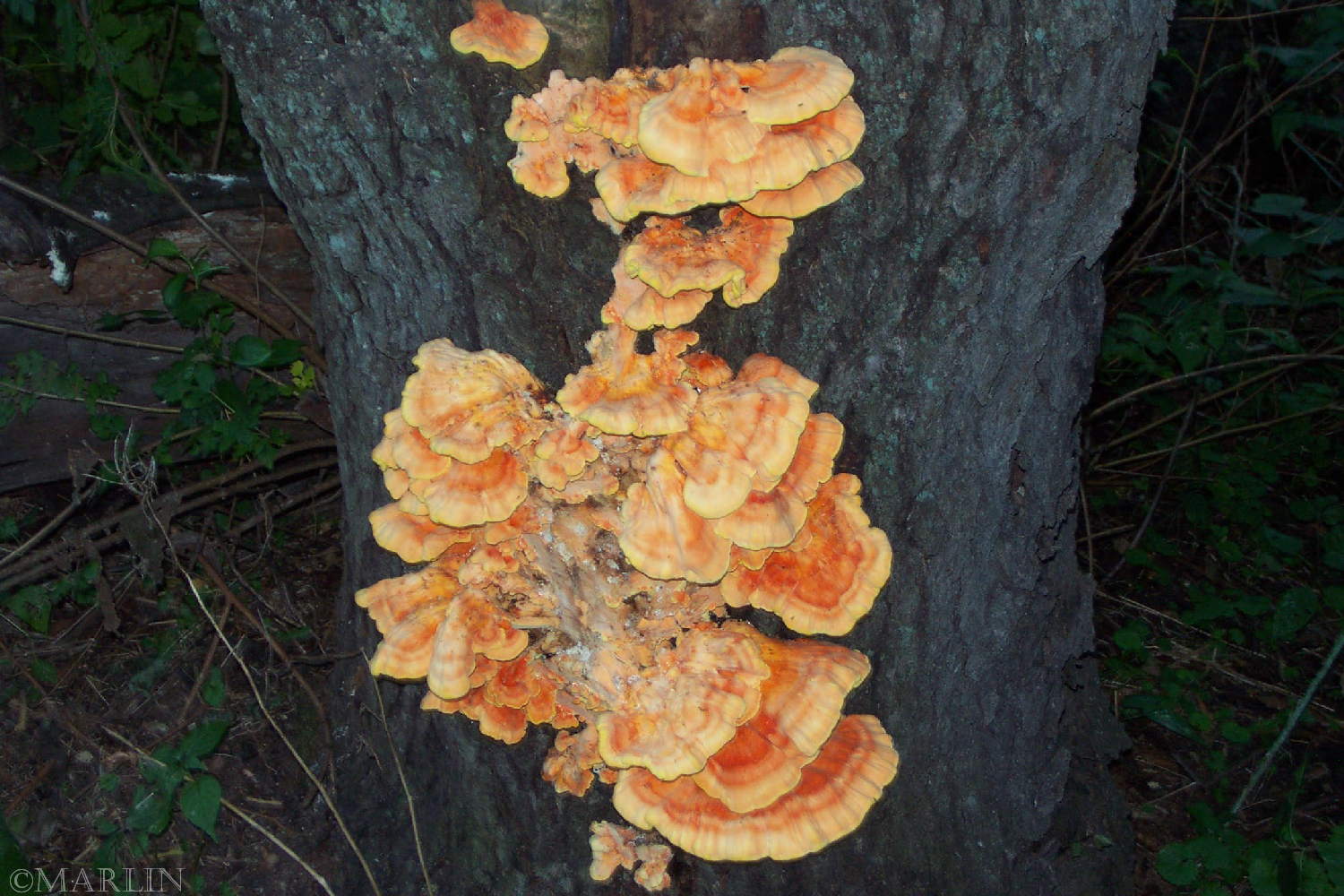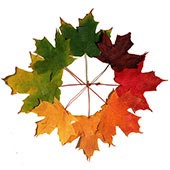Sulphur Shelf Fungus
Laetiporus sulphureus
Commonly called “chicken of the woods,” these edible mushrooms are conspicuous and not easily confused with other fungi, with their brilliant orange-red caps and pale sulphur-yellow pore surfaces.
This sulphur shelf is in turn being eaten by mold
The sulphur shelf is a bracket fungus that grows on both living and dead tree trunks and on stumps and logs.
It is parasitic to live plants and saprophytic (drawing nutrients from decaying material) on dead plants. The sulfur shelf always grows on wood, usually in large masses of overlapping caps. It has no stem; the cap is attached directly to the wood. The pores are tiny. When cooked, sulfur shelf mushrooms have the texture and often the taste of chicken, hence the common name.

